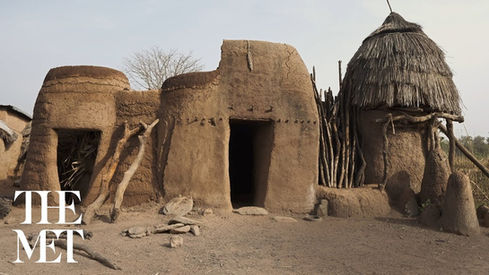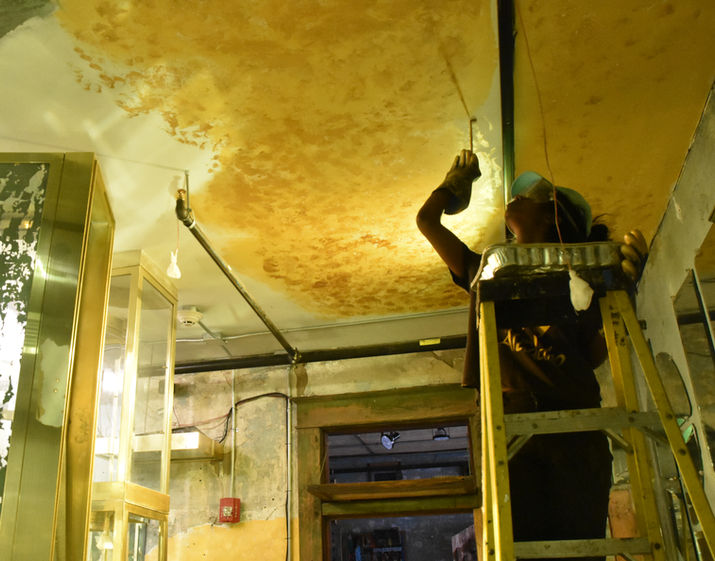

SOSENA SOLOMON
Documentary Filmmaker, Visual Artist, Professor, Cultural Preservationist
RECENT PROJECTS
African Cultural Landmarks
"A series of new films inspired by Africa’s diverse cultural landmarks, filmed and directed by award-winning Ethiopian-American social documentary and multimedia visual artist Sosena Solomon and created in collaboration with World Monuments Fund (WMF), will be featured throughout The Met’s Arts of Africa galleries in The Michael C. Rockefeller Wing, which will reopen on May 31; the content will also be featured online."

Merkato
Merkato Journeys through the largest open-air market in Africa, documenting the daily lives of four merchants and their interconnected relationship with the market. These visually gripping, poetically felt portraits illuminate the fragile and universal nature of the human condition. The film explores the living testimonies of Hawa, the oldest woman working in Merkato; Gideon, an ex-gang member looking for redemption; Ashenafi, a young dreamer learning how to make it; Wurro, a young woman responsible for her own success. As their livelihoods are on the verge of being transformed by incoming strip malls and parking lots, this social documentary is a tribute and celebration of the people who live, work, and dream in Merkato.
ITIFWORQ / Double Gold
ITIFWORQ/DOUBLE GOLD, 2017/2018 is history as it is retold and remembered. Through my camera, I prompt remembrance and autobiography from our conversations on my grandmother’s bed. I recreate this intimacy through immersion in a cornered, two-channel video projection, where the viewer sits in the center, listening through headphones, with Ethiopian cultural relics astride. The looping dual-channel projection allows deeper engagement with the storytelling process, as my grandmother narrates on the left screen, the traditional coffee ceremony is shown on the right. Her account advances as the coffee ceremony does, the process itself being a cultural opener for gathering and sharing. It is a meditation on memory, resilience, family history and divine feminine energy.
Lost in a Dream
LOST IN A DREAM is a deeply personal, poetic tribute to my twin sister who passed away prematurely, and in a larger sense, speaks to the mending of separations. The film conveys a cathartic experience of my process of reflection in confronting my fears and shifting the internal dialogue I have with myself. On a universal level, this piece is a reminder that we can bridge impossible distances, whether we have literally lost someone, ourselves, or are seeking to find common ground. We are all in this together. This video is part of an autobiographical installation work.
Eckhaus Latta
Mizan
INSTALLATIONS
Merkato
In MERKATO, visitors see, feel, hear, and taste through the constructed marketplace. The immersive dirt floor environment features a performance by a recycling vendor, a coffee ceremony, bread sharing, incense, recorded soundscapes, visual projections, photos, and sculptural installations. In Callowhill, the neighborhood where I lived for 7 years, the themes of displacement, transition, and change also emerge. Philadelphia’s first and oldest woman street vendor participated, giving powerful testimony of her experience and the connections she felt to Merkato vendors. The Ethiopian Community Center in West Philadelphia is the longest-running Ethiopian organization nationally. Installing here called upon personal memories, stories, and associations of Merkato to be shared in a culturally resonant space amplified by the coffee and incense ceremony.
At the Wolf Humanities Forum (IHP), the audience of academics, African cinephiles, and an array of international students connected across cultures when visiting the installation and screening. The Q&A brought to light commonalities of frenetic and rich market spaces globally. Plastic water barrels, recycled containers, crates, tarps, and chicken wire, pictured here, provide visual texture over the dimensions of sound and smell. I chose to reproduce the recycling section of Merkato, being the most vulnerable to permanent displacement from redevelopment. Wurro's portraits, among others, are featured in the installation. Relationship and trust building is a core tenet of my ethnographic lens, as I seek to represent my own communities and other culturally marginalized groups with deep respect, thoughtfulness, and sensitivity.
ITIFWORQ / Double Gold
I crafted this space to be textured and multi-sensory for the viewer to sit in the center and feel immersed in a slice of my grandmother’s home, her words guiding you while the material components enhance this sense of familiarity. ITIFWORQ/DOUBLE GOLD features important heirlooms, including family portraits, items for the coffee ceremony, and my grandmother’s cape, which, as an item of clothing, connotes honor and respect as it is reserved for women who are married or war heroes. Two-channel cornered video and single-source headphone audio make this encounter deliberately isolating and deeply personal. My father, pictured below, reflects the larger intentions of my work by activating remembrance and showing African stories rarely seen in this form. I also activated this work at Konsthall C Gallery in Sweden in 2018, where it was the opening exhibition of CinemAfrica Film Festival’s 20th Anniversary and received the jury award for Best Short Film.
AMY
AMY, 2019 is a recognition of the life and passion of Amy Kidoho, a hair artist and braider based in North Carolina, though originally from Senegal. As a multimedia installation piece, this first-person narrative is told amidst the “glass forest” I create. This site is an intimate, highly reflective, and all-encompassing space comprised of scaffolded broken mirrors, golden glass fragments, gilded metals with glimmering yellow gold painted walls and ceilings. The 5-minute docu-memoir is projected onto a tarnished mirror, which serves as a reference to both the fully reflective walls of African hair salons and the distortion of reality through the camera and the global gaze. While Amy is a survivor of human trafficking, the regimes of representation surrounding victimhood, migration, and Africa are severely dehumanizing and reductive. The fragmented and spotted glass alludes to the multiple realities we inhabit, both through imposition and self-construction. I also braided and placed hair in the glass cases to evoke the material conditions of fashion objects and their implications in terms of trade, circulation, and industry. While hair is mass-produced and imported, it has no inherent value. Amy’s working of the hair, her attention to detail, and the highly personal act of braiding someone’s hair as a form of their self-fashioning, also speak to the dimensions of gender, labor, and affect in this work.











